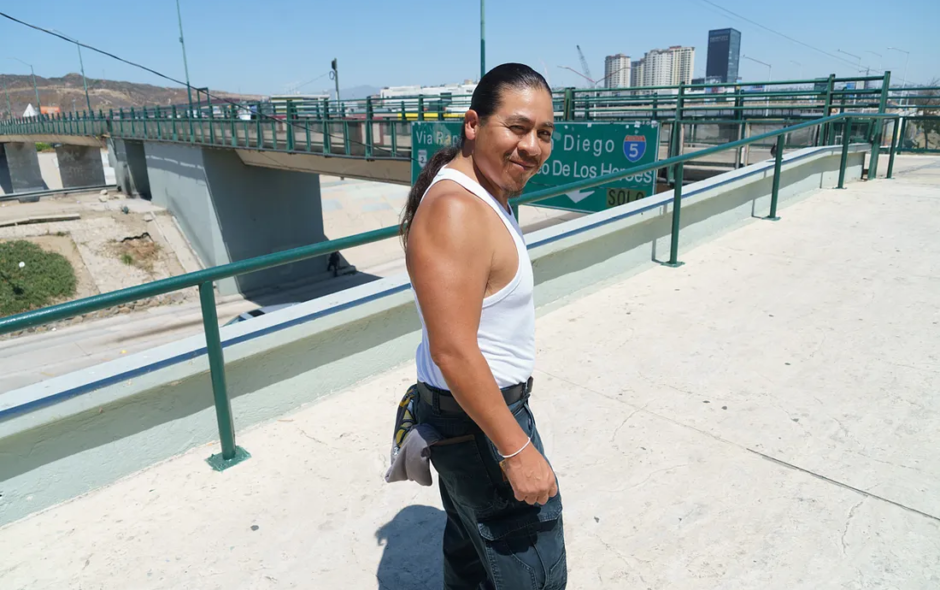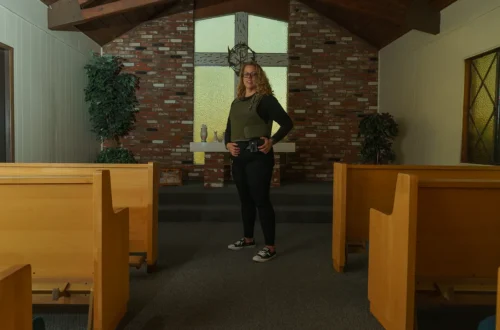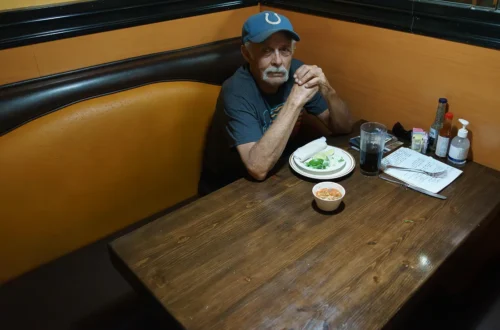Gladiator School: Stories from Inside YTS (Episode 15)
Edited and photographed by David William Reeve
Editor’s note: This is Part 15 of “Gladiator School: Stories from Inside YTS” — an oral history of life inside California’s most notorious juvenile prison. Youth Training School (known formally as Heman G. Stark Youth Correctional Facility) had a reputation for mayhem, violence and murder that earned it the name Gladiator School. It closed in 2010. Juveniles were hardened for survival at YTS, only to be returned to the streets.
Since publishing the story The Closing of California’s Most Violent Juvenile Prison, survivors of YTS have come forward to tell stories of daily life inside. This series relays and respects their stories: Juvie told by those who were there.
In this episode, Gerardo “Monkey” Martinez, a young Nahua Native from Mexico, arrives in El Monte, California to a family he doesn’t recognize. Violence at home puts him on the streets, where his skills has a fighter make him a friend or foe of rival gangs, resulting in a confrontation that takes one life, and ends another.
Home is where I’m standing
My mom brought me a birthday cake from Safeway. She got a special deal that included two cakes because she had to bring enough to share with everybody in my wing at Central Juvenile Hall — where the movie American Me was filmed. My friend Trigger, who I knew from the streets, helped me cut the cake. A few days later, I turned 18.
“Get ready, Mr. Martinez,” an officer said. “The deputies are coming to get you.”
At ten o’clock at night, they come and take me to reception at L.A. County Jail. It’s was now eleven o’clock.
“Stay here, alright? You’re still not an adult yet,” they said.
When twelve midnight hits, I hear the door buzz open.
“All right, Mr. Martinez, you’re officially 18. You’re now part of the general population.”
From there, I get processed with everybody else.
I’ve been known as “Monkey” since I was four years of age. The name was given to me in a negative way because of my Native appearance. They used to shave my head when I was a little kid and said I looked like a little monkey. It was a putdown, but I made it into something comical at first, then positive. When I studied Native traditions and cultures, I learned that the monkey is considered the mediator between the animal world and the human world; it can be educational, musical, and mischievous.
I was born in 1974. My dad was a diesel truck driver. He would transport goods into Guadalajara, where he met my mother. My dad and mom traveled between Mexico City, where I was born, and his Indian pueblo. My dad had love for my mom but he was a drunk and very jealous; he used to beat her. My mom left him and took us back to Guadalajara to live with my grandma, aunt, and other family members.

When I was 2, my mom went to the United States and left me with my grandma.
Living with my grandma, I would travel all over Mexico on cheap buses, riding with animals on trains, or jumping in the backs of trucks. When I was four years old, we traveled into the desert and arrived in Tijuana, where we stayed for two weeks. Tijuana was nothing but dirt at the time. There was only one paved road. I would run up and down the hills and burn tires in the street with other kids.
It was 1978 when she eventually sent for me. There was a man who I came to know was my stepdad. He spoke Spanish but with a Puerto Rican accent. He approached me, and I ran away. He chased me down a hill, eventually got me, and put me in the back of a station wagon. My aunt was in the car, so I felt safe. As we drove toward the border, my aunt got out of the car, but the car kept on going.
I looked back, and she was waving goodbye; I started to cry. I felt like I was being discarded as the car crossed the border into the United States.
This woman, Maria, looked like my aunt and someone told me she was my mom, but I didn’t know her. I called her Maria for a whole year before I could call her mom — I didn’t remember who she was.
My mom teased me about being Native, clowning about my dad. I’m Nahua. The Nahua were what they called the Aztecs, the Mexica. The Nahua is the biggest tribal bloodline north of the Maya people. We’re in 13 states in Mexico, including Guerrero, Michoacan, the State of Mexico, Puebla, Veracruz, and Jalisco. We have 26 different variations of our language. I’m from the State of Mexico, and my pueblo is called San Mateo Alolomoloya, or Saint Matthew.
I went to kindergarten at a multicultural school in El Monte, just outside of Los Angeles. I was learning to cut paper with scissors. Later at home, I found my stepdad’s scissors and did what I learned in school: cutting paper. His scissors were only for cutting hair, but as a kid, I didn’t know the difference. When my stepdad saw that, he beat the shit out of me. He had a horse strap, used for a saddle, that he wrapped around his hand. He would beat me with it. He bruised me up quite a few times, where I couldn’t go to school. I don’t say this helped me to survive, but I developed a high tolerance for pain.
Having just arrived from Mexico, I didn’t speak English and had this negative identity issue. Nobody was looking Indian except a few people that I knew. I’ve always known I was Native, but I didn’t know my people. As a kid, I was always running into other Indians who would look to me as their family member. There’s no way you could mistake me for anything other than a Native kid.
Later, I let my hair grow long and braided it, taking pride in who I was. I was not siding with any group or gang. I was one person representing myself as Native.
The street where I grew up had a football team called De Garmo Boys. All the guys were two to three years older than me. They were party boys and would deal drugs, but it was never a gang. Another street saw this football team and tried to mimic that, so they started a team named Dirty Deed Boys on Shirley Avenue. I could see them start to change into a style of gang-banging.
This new guy moved into El Monte. He was a pretty boy with girls looking up to him and a lot of family. His name was Angel. He had brothers who were gang members from Arizona, and he started getting involved in gangs.
The dominant gangs started recruiting. Once the young guys were getting into it, they’d try to impress everybody, but I had my own style. They’d see me with my hair braided and my hat backward with “Monkey” written on it. I knew them all, and they tried to use me as a mediator to communicate between them.

I’d go to the Boys Club to train myself to fight in the streets. I would fight guys two-on-one or three-on-one because I wasn’t scared. Every time that I fought with somebody, that just brought up another person who wanted to fight me next. I could take hits. It goes back to my stepdad — I developed a high tolerance for pain. When I’m fighting, I’m letting out all that rage. I’m not just fighting with the person who wants to fight me; I’m fighting against my stepdad.
I met a friend named Gabriel from Frogtown, a gang in L.A. He started interacting with some girls that Angel was trying to be with. Gabriel had his L.A. style, and Angel was intimidated.
Angel became more forceful when he’d see me with Gabriel at different parties. His gang tried to jump me at night, but I ended up fighting and kicked their butts. They were surprised at how well I could fight.
Angel would send people to get me, but he would never fight me, himself. I sent him a message: Me and you, one-on-one, at a neutral spot. If I kicked his butt, he’d accept it. If he kicked my butt, I’d accept it.
He sent word back. “No,” he said, “I’m going to kill you.”
A lot of guys were carrying weapons. If it wasn’t a gun, it was a pointed screwdriver or knife. Since Angel said he wanted to kill me, I eventually took my stepdad’s scissors because they were sharp to cut hair.
I was coming from this girl’s house in Temple City, and I saw two cars pull up in front of me; I recognized Angel. He got out and started talking crazy. The others surround me. He opened a pocket knife and told me, “You know I can slice your throat? What are you gonna do?”
My hands were in my pockets, and I wasn’t intimidated. I was ready. I knew what was going down.
“It’s not up to me, fool,” I said. “You’re the one that’s trying to jump me.”
The dude on my right side was a big football player and pushed me toward Angel and his knife. I grabbed Angel by the shirt and stuck him in the neck with scissors. Angel fell back. They all started punching on me and didn’t see that I had just stuck Angel in the neck. I had the scissors in my fist, punching back. The big fella grabbed me and threw me onto the concrete, hard. When I got up, Angel stabbed me in the arm.
I was punching and trying to kick Angel’s knife away. He was leaking — I could see blood.
I jumped into the middle of the street. This lady in a maroon car saw what was happening and maneuvered her car to block them from coming after me. They stopped, but Angel made his way around the car, taking his shirt off as he came at me. When he got his shirt above his eyes, I punched him with the scissors in my fist, and he went to the ground. I dropped him. His homeboys picked him up, leaking blood everywhere, and took him away.
I was already kicked out of high school. It wasn’t because of my academics. I loved to study, but I felt like nobody really wanted to teach me. They had put me in special ed classes, and I would get frustrated. I was a happy kid with a lot of energy — a hyper kid. I detested authority. I detested any adults who didn’t want me to be happy. I found happiness in the streets and never wanted to go home.
I started carrying a gun. It was a cheap .22 that I got for $20 from a guy who wanted to get high.
I wanted to visit with friends but didn’t have a car and walked everywhere. I figured Angel wouldn’t believe I’d cut right down Rose Avenue, where he lived. My ego was just like I’m Superman, I don’t give a damn, and I got a gun in my pocket.
As I walked down Rose Avenue, somebody whistled at me — a street whistle. I turned around and noticed someone calling over to me. I waved back and walked towards him.
I recognized who it was. They called him Evil B.
I didn’t know he really socialized with Angel and had recently gotten into Angel’s gang, but I shook his hand. Behind him, I could see a garage door halfway open, but I couldn’t see who was inside.
“What’s up? Who’s here?” I asked.
The garage door opened, and they take off, hitting me. Maybe it was Evil B who hit first, but as soon as they hit me — I just reacted! I busted out the gun and shot. I shot one time.
I dropped the gun and got away. All I knew was that I thought I hit him. I thought I hit Angel.
There’s a Police detective named Philip Oriano with El Monte Police. I’ve known him since I was a kid. He knows what I do when I get in trouble, where I go, and the families I stay with. Sure enough, the next day he finds me in Baldwin Park, staying with a friend. I tried to get away through the back window, but they had it closed off with a screen. I walk out front, and Philip comes over to me.
“Hey, Monkey, you know we’re looking for you, right?”
“Yeah, for what?”
“For a 187.”
“What’s that?”
“A murder.”
“Damn, he died?” I said, just like that.
On the police report, they said Angel was sitting down when he was shot in the chest, but he’s the one that rushed me! I shot him in the chest, hitting his main artery.

I ended up taking a 15-to-life plea bargain and was transferred to the California Youth Authority for a 90-day observation. I arrived at reception, SRCC in Norwalk, where they saw my long hair braided up. They insisted on cutting my hair and wouldn’t let me out of my cell until I did it. I felt sad and all that, but I cut it. By cutting my hair, I knew people would look at me in a different light.
In the California Youth Authority, we had a strong circle, meaning a lot of Indians, like a council. We were representing who we were; we were learning and getting educated. When I arrived at YTS, I told the circle leaders who I was, what I wanted, and why I joined the circle. I grew my hair long, again. I didn’t ask for permission. I said, “I’m coming.”

All Indians from the United States had the right to join the circle, based on tradition, but because I am from Mexico, there was an issue of why I wanted to join. We called it “hiding behind the feather” where gang members try to play Indian because they’re trying to run away from their gang affiliation. Once they see there’s an Indian circle, gangs feel like they can identify as Indian to get away from the gang lifestyle. It’s kind of like the way people become religious.
They said to me, “Okay, just one question: Let’s say there’s a riot between Indians and Mexicans. Who are you going to side with?”
“I’m Indian,” I say, “I’m running with my people.”

So many Native people would come to visit us at YTS. We had elders come to our lodge who were recognized around the world. We had Oren Lyons come to our lodge. He is one of the Chiefs of the Onondaga Nation. We had Leon Shenandoah, who was a Chief of the Iroquois nation. We had Little Crow, a Lakota elder. We had Joseph Chasing Horse, who helped us build our sweat lodge. Robert John Knapp was a Seneca from Iroquois Nation and served in Vietnam. The tribes of the Morongo Reservation would come to visit us. Torres Martinez Natives would come to visit us.

We used to tell the Indian brothers, “Ain’t nobody telling you to bow down. If you’re Indian, die Indian, or die gang banging. You’re going to die one way or the other. The option is yours.” I say right now that in the Youth Authority, you have that opportunity. Because once you hit the prison, it doesn’t work that way. Because, if you’re Indian and you’re in the mix, you’re in the mix, you can’t get out of it.
I went through the whole high school curriculum by myself. I only had one issue in one class, which was math. The teacher was a black man, like six foot two. He used to wear his African goofy hats and all that. He was a biker, and he had a white wife. I thought, okay, cool. I’m going to be able to learn here. He’s a minority. He’s going to be awesome.
I’m in the math class, having difficulty, and I ask him, “Hey, can you help me?” He just looked at me, then looked at the textbook.
“Just go back to your seat and read.”
I’m getting frustrated. I go back to him and say, “Hey, I need help. I don’t understand this.”
He’s like, “Look, you just got to read it. Go sit back down.”
“You know what? Fuck you, then.” I grabbed the book, and I threw it at him. It hit him in the face. He could have just beat me up, hurt me, whatever. I didn’t care. I was frustrated.
They put me in another math class. This time I got a short white guy with a mustache who was from Texas. I’m like, oh, man, I’m not going to learn here. It’s going to be the same thing. His name was Mr. Beck.
“Mr. Beck,” I said, “I’m in your math class. I’m here to learn. I’m your student, and you’re my teacher.”
He goes, “Yes.”
“Are you going to teach me math?” He looked at me and paused, then said, “Since I’ve been working here, I’ve never had a student ask me to teach him.”

When Ms. Baker got killed, they shut down the whole prison. They were looking for weapons and investigating. They hit my cell and found a weapon. They got me and my bunkie and put us in the hole. Anyone with a life sentence was sent away. They sent me to North Kern State Prison in Delano. They didn’t know how to classify me when I arrived because they didn’t have my paperwork.
There were a lot of guys in Delano that I knew. These paisas said, “Hey, come kick it over here.” I said, “I don’t kick it with you.” Then the gang bangers said, “Come kick it over here.” I said, “No, I don’t ride with you, dudes.”
I said, “Where are the Indians at?”
They said, “There are no Indians here.”
I said, “whose table is that?” pointing at an empty table.
“That’s nobody’s table,” they responded.
“That’s where I’m sitting. I put my stake down. This is now the Indian’s table.”
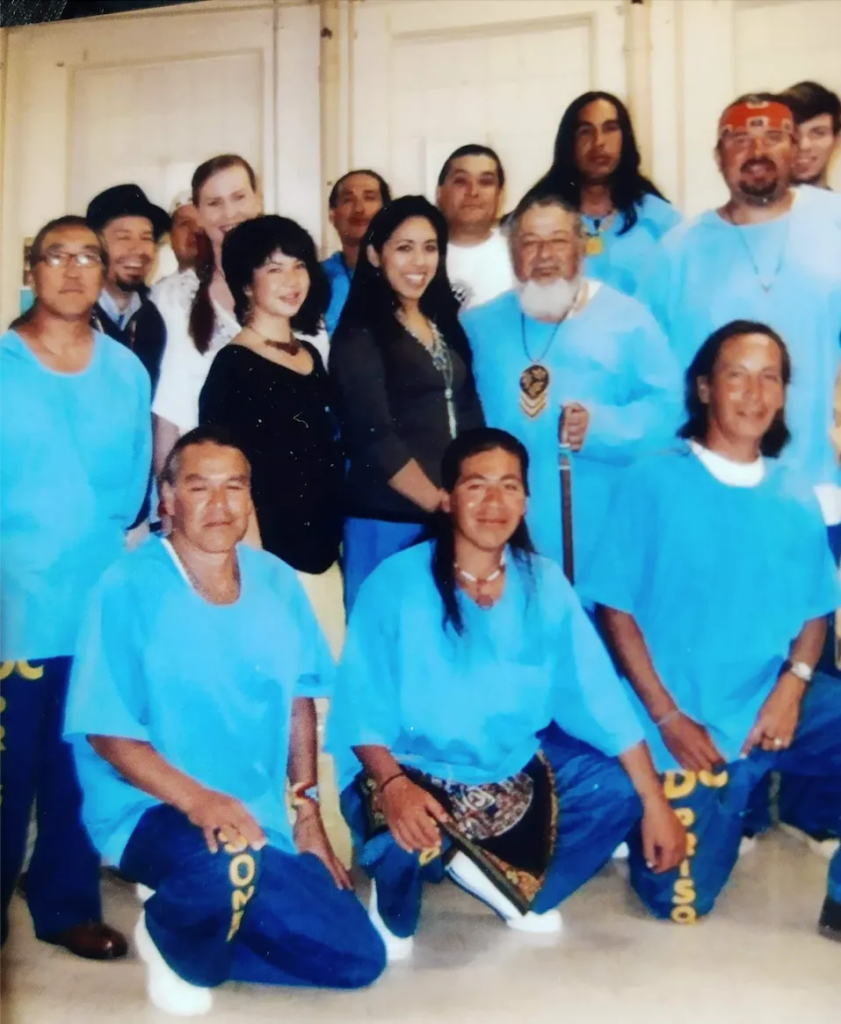
The things I went thought become a lesson and I have been able to guide others. People open up to me. Full-grown men, with tattoos, six-foot-four, in prison who are the meanest and toughest in the joint, have shed tears with me.
I say, “I know what you need…”
They’d say, “What?”
“You need a hug!”
I’d rush them and grab them and give them a hug and they’d laugh.
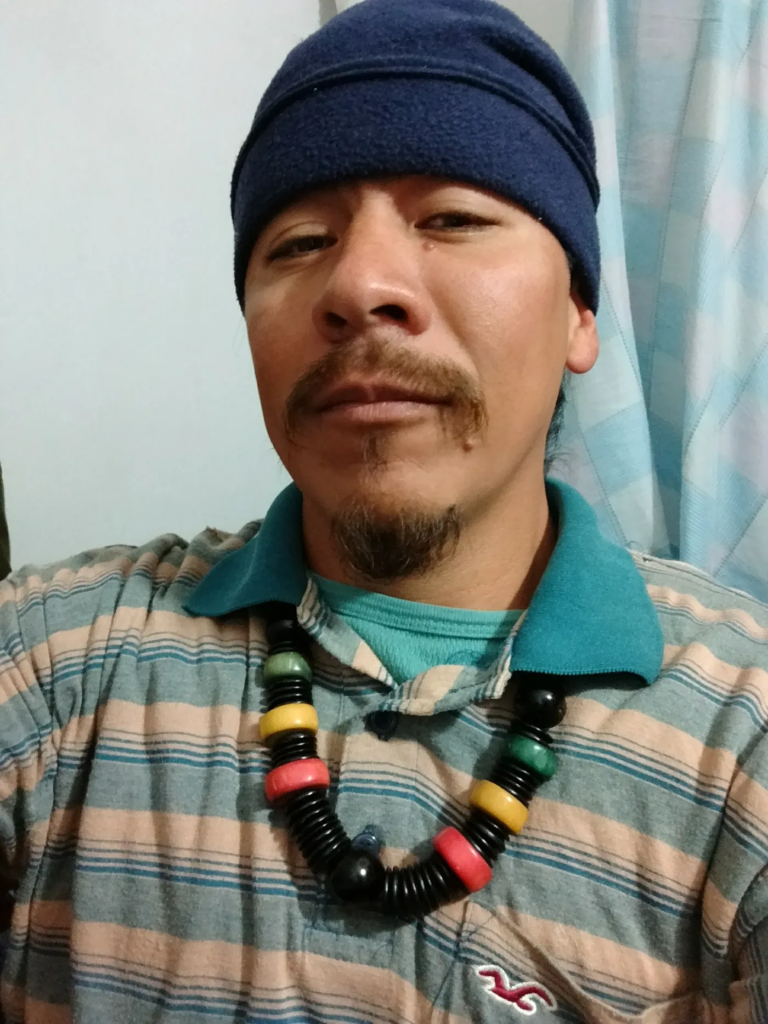
I was found suitable for parole under SB260 in July 2014, but it took a long time before they could complete the whole approval. In December, they told me, three days before my date, that I would be paroled and deported. This gave me some time to call family and friends.
“Immigration and Naturalization Service is coming to get you,” they said.
Me and two other guys were put in hand and ankle cuffs and sent to Immigration and Customs Enforcement, ICE, just outside Sacramento, where we were transferred to a bus. They put us in a county jail in Yuba City, which also had a partial detention center for ICE. I was moved around from Sacramento to San Francisco and then Oakland. The first time I’d been on a plane, I was flown from Oakland to San Diego, then put in a white van with other deportees heading to the border.
I had my property in a duffle bag and had saved $500 from working. I had to hide my cash because I overheard some gang bangers in the van were planning to jack the deportees when we crossed over the border.
They let us out of the van at the border and unlocked our hand and ankle cuffs. The guy from ICE pointed south and said, “See that? That’s Mexico. Then he pointed north. That’s the United States. Don’t come back.”

I felt more love, respect, and responsibility in prison than here. A lot of Native people are sedentary. I’m nomadic, but not by choice. Home is where I’m standing because if I recognize my Native ancestry, that means that this continent is my home.
I was a juvenile, 17 years old, who was trying to figure out his life and got caught up in nonsense and kicked out of school. I didn’t have a home. It was just a place where I put my head. I didn’t feel loved and secure there, so was that really a home?
Across the border in Mexico, there was a place to check in, but they didn’t offer any help. In the street, there was a van taking deportees to a Salvation Army shelter. The deportees in the van were nervous about being back in Mexico. I started talking to them, giving them a sense of courage as we were being taken to a shelter.
“You guys shouldn’t be scared,” I said. “You shouldn’t be scared to come back home.”
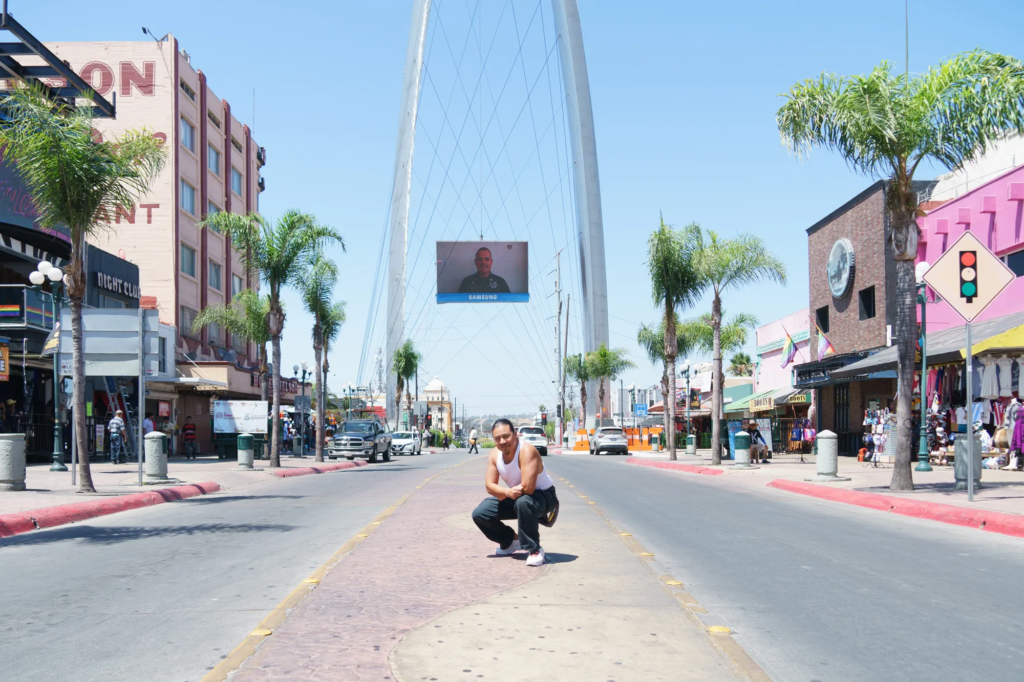
Gerardo “Monkey” Martinez served 23 years on a 15-to-life sentence for murder. During his incarceration, he did time at Sylmar Juvenile Hall, Los Padrinos Juvenile Hall, Central Juvenile Hall in Los Angeles, Youth Training School, California Institution for Men, West Valley Detention Center, Correctional Training Facility — Central Yard — Soledad, and North Kern State Prison in Delano. In recent years, Gerardo has recognized a need for supporting men who are unprepared for deportation after serving time in U.S. prisons. He works within his community in Mexico to improve conditions for deported people and has been featured on the television news and is the subject of an upcoming documentary film.
David William Reeve is an independent writer and photographer who documents the lives of juveniles at risk. Visit davidreeve.net for more.
Contact: davidwilliamreeve (at) gmail (dot) com

